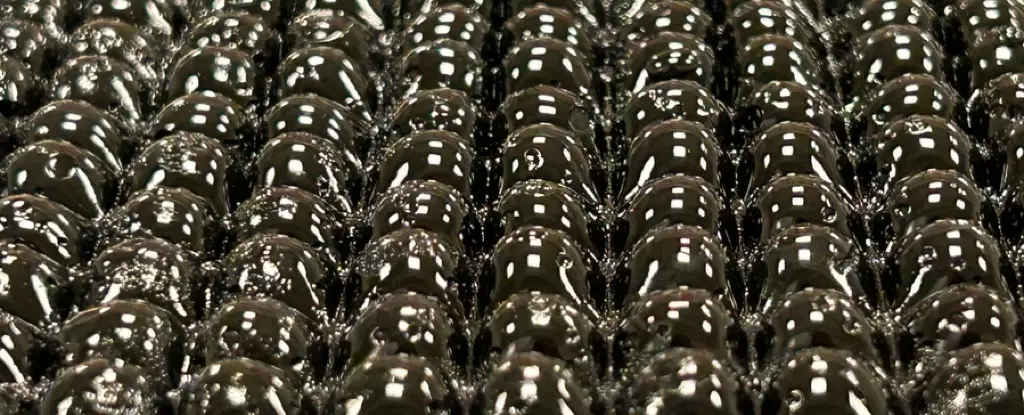Water scarcity is undeniably one of the defining challenges of our era, and any new technology addressing it deserves attention. Recently, engineers at MIT introduced a peculiar “black bubble wrap” — a hydrogel-based atmospheric water harvester designed to extract potable water from the dry air without any external power input. Demonstrated under extreme conditions in California’s Death Valley, one of the harshest deserts on Earth, this device extracted approximately 50 milliliters of water daily. This achievement, while modest in volume, appears promising given the experimental context. However, as exhilarating as this development sounds, it demands a critically measured appraisal beyond the initial excitement.
Real-World Impact or Scientific Curiosity?
From one perspective, this hydrogel harvester represents a clever exploitation of materials science. Its creators combined polyvinyl alcohol, lithium chloride, glycerol, and black ink into a molded structure resembling bubble wrap to optimize surface area for moisture absorption. The intricate microstructure cleverly prevents the leakage of water-attracting salts, overcoming a persistent problem of contamination that plagued earlier prototypes. It also functions passively, a boon in regions without reliable electricity or sunlight—conditions that often coincide with the highest need for clean water.
Yet, one must ponder whether 50 milliliters per day genuinely makes a meaningful dent in the colossal global water crisis. The UN estimates that billions face daily water shortages severe enough to impact health and livelihoods. Even if scaled up, such a device would need to be deployed in enormous quantities to offer anything close to communal water supply levels. This points to a classic tension between technological ingenuity and practical scalability — a factor often glossed over in media portrayals that paint technological breakthroughs as silver bullets.
The Limits of Technological Optimism
It is tempting to embrace such advances under the banner of innovation-driven solutions championed by tech-optimists and progressive policy circles alike. However, the enthusiasm around this “bubble wrap” water absorber should be tempered by an understanding of socio-political realities. Achieving equitable distribution of these devices would require robust infrastructure, education, manufacturing capacity, and maintenance services — none of which are guaranteed in many water-stressed regions.
Moreover, there is an underlying risk that over-reliance on technical fixes diverts attention from the broader systemic issues that perpetuate water insecurity: economic inequality, political instability, poor water governance, and climate change itself. While technology is crucial, it cannot—and should not—replace comprehensive policy reform, community empowerment, and sustainable water management practices. Thus, this technology must be contextualized as one tool among many, not a panacea.
Innovative Materials, but What About Environmental Costs?
Another often overlooked aspect is the environmental footprint of these advanced materials. Lithium chloride and synthetic polymers, components vital to the hydrogel’s water absorption capabilities, are not inherently benign. Their life cycle — from extraction and manufacturing to disposal — may carry hidden ecological tolls. In a world increasingly wary of greenwashing and unintended environmental consequences, proponents of such technology must rigorously assess these impacts to ensure that solutions to one crisis do not inadvertently spawn another.
Centering Humanitarian and Ethical Imperatives
From a center-liberal perspective, the excitement around this innovation should be coupled with caution and a commitment to equitable access. Technological advancements should serve humanity inclusively and sustainably. This means transparency in development, local involvement in deployment, and policies that prioritize marginalized communities in water-stressed regions. If effectively integrated into holistic water security strategies, devices like this hydrogel harvester could indeed supplement existing solutions, empowering vulnerable populations rather than creating dependencies on exotic materials or external expertise.
In short, the MIT team’s “black bubble wrap” is a thought-provoking example of human ingenuity confronting an escalating environmental challenge. Nevertheless, the journey from laboratory curiosity to life-saving necessity is fraught with practical, ethical, and systemic hurdles. Without mindful navigation of these complexities, we risk elevating technological novelty above the nuanced social realities that ultimately define success in the fight for clean, reliable water access worldwide.

Leave a Reply